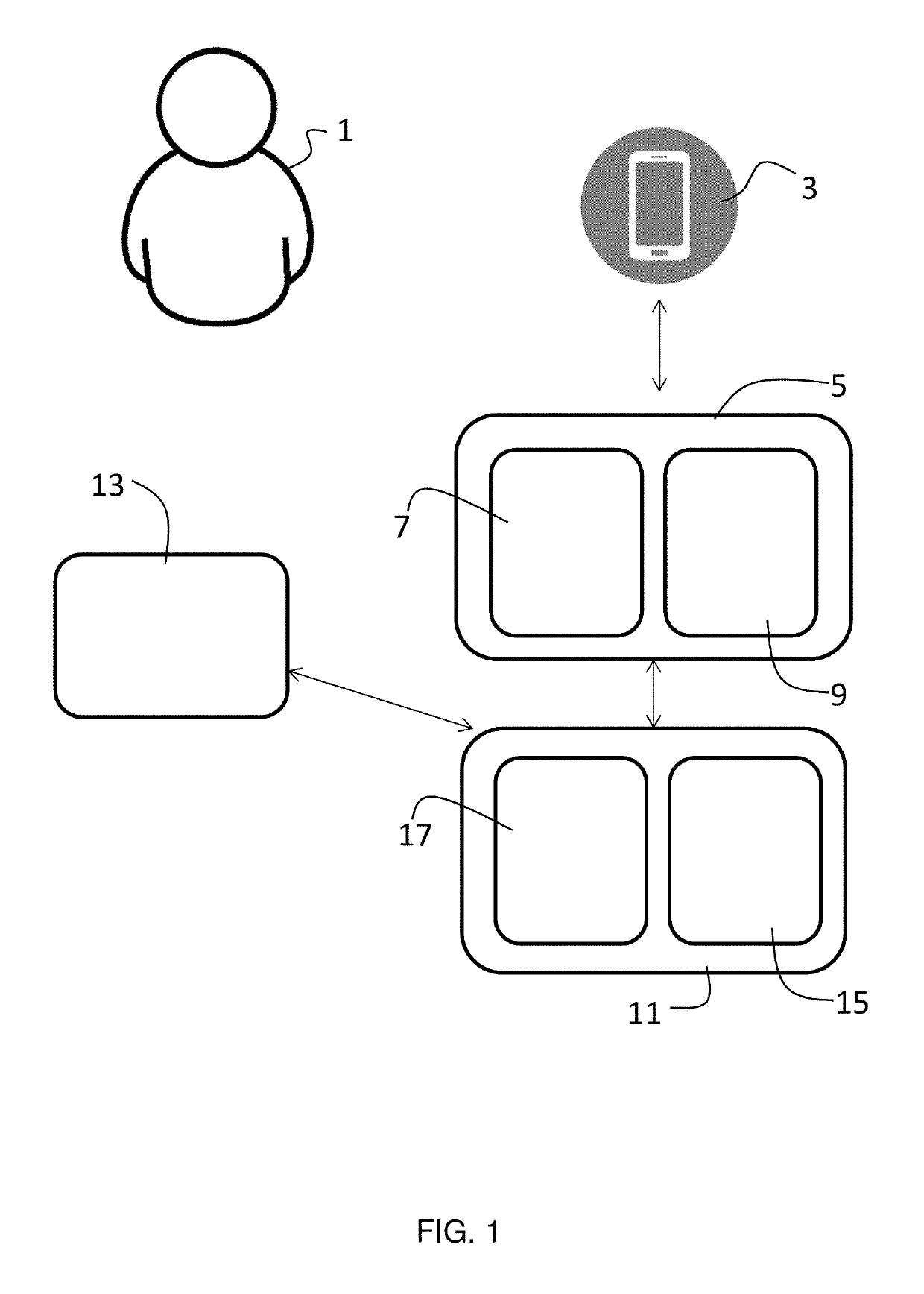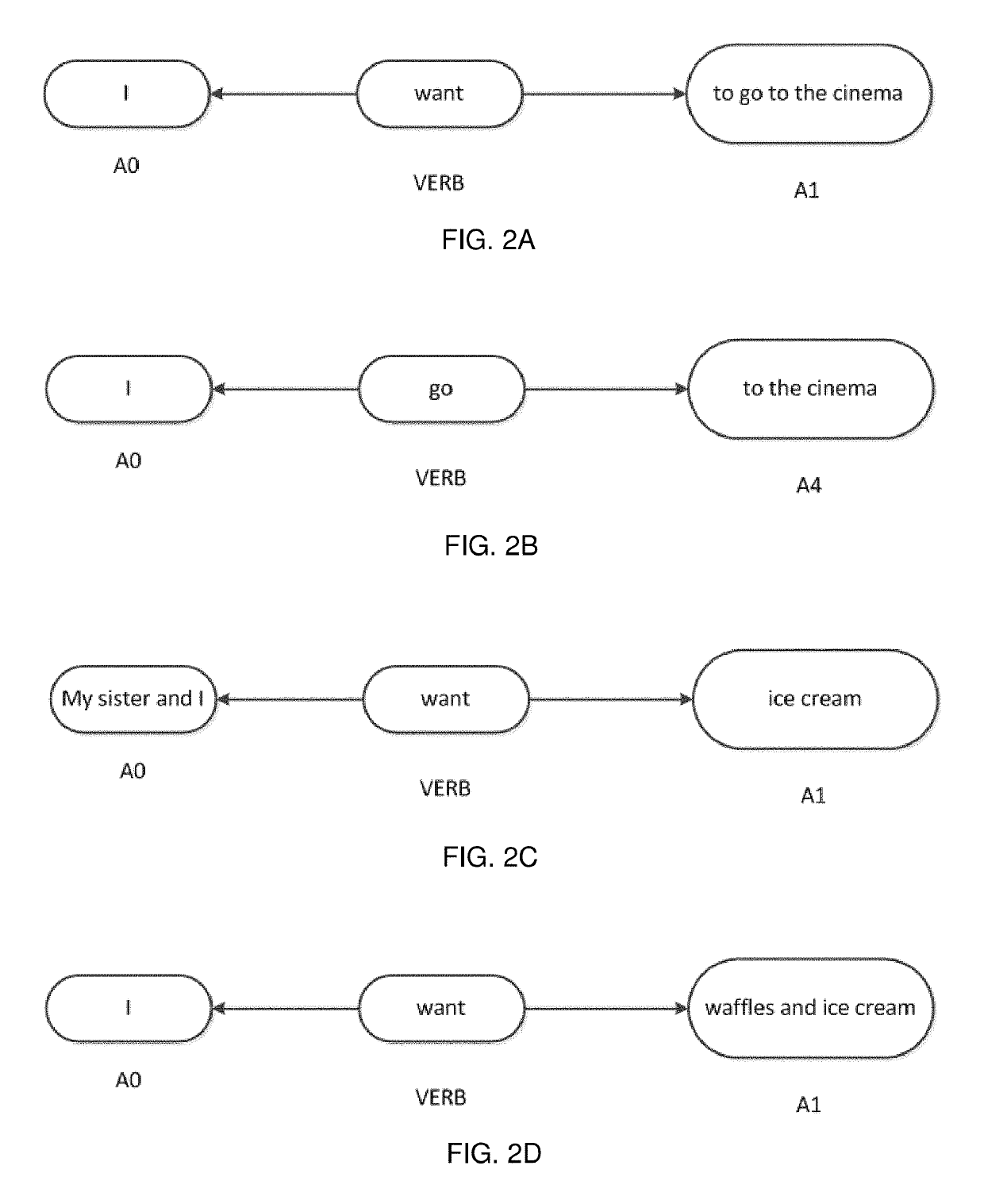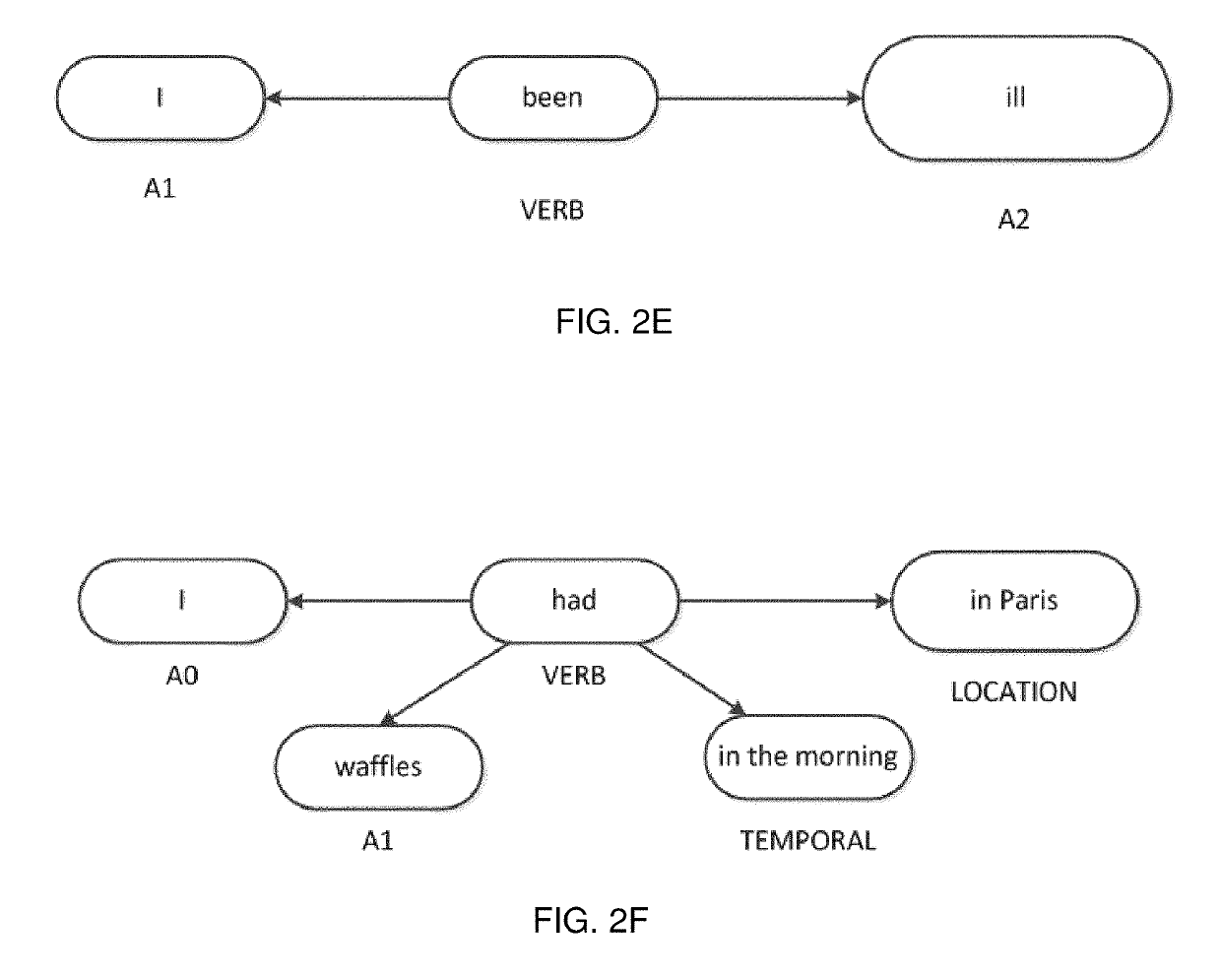Semantic graph traversal for recognition of inferred clauses within natural language inputs
a natural language and inferred clause technology, applied in the field of semantic graph traversal for recognition of inferred clauses within natural language inputs, can solve the problem of relative inability of computing systems to understand natural language, and achieve the effect of flexible, effective and computationally efficien
- Summary
- Abstract
- Description
- Claims
- Application Information
AI Technical Summary
Benefits of technology
Problems solved by technology
Method used
Image
Examples
Embodiment Construction
[0041]The embodiments described herein provide improved methods for multiple intent recognition. Specifically, the methods described herein provide improved means for parsing a semantic graph in order to extract multiple input clauses.
[0042]Some methods for recognising multiple intents within natural language inputs treat the problem as a multi-label classification problem, in which each sentence is labelled with its potentially multiple intents, or a sequence-labelling problem in which each word is assigned to an intent. The downside of these classification approaches is that they are supervised learning techniques that require annotated conversational training data. It can be difficult to obtain sufficiently large sets of labelled data to enable such supervised learning systems to be trained. In addition, such systems generally need to be trained for their specific type of dialogue. These classifiers are therefore limited in that they are computationally expensive, requiring a lar...
PUM
 Login to View More
Login to View More Abstract
Description
Claims
Application Information
 Login to View More
Login to View More - R&D
- Intellectual Property
- Life Sciences
- Materials
- Tech Scout
- Unparalleled Data Quality
- Higher Quality Content
- 60% Fewer Hallucinations
Browse by: Latest US Patents, China's latest patents, Technical Efficacy Thesaurus, Application Domain, Technology Topic, Popular Technical Reports.
© 2025 PatSnap. All rights reserved.Legal|Privacy policy|Modern Slavery Act Transparency Statement|Sitemap|About US| Contact US: help@patsnap.com



